Richard Green
Accurate 3D Grapevine Structure Extraction from High-Resolution Point Clouds
Feb 26, 2025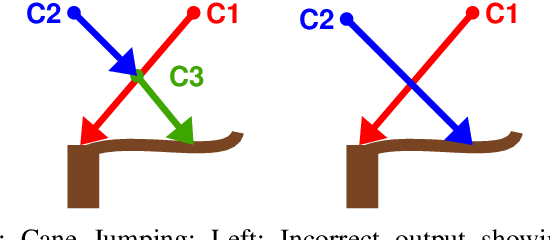
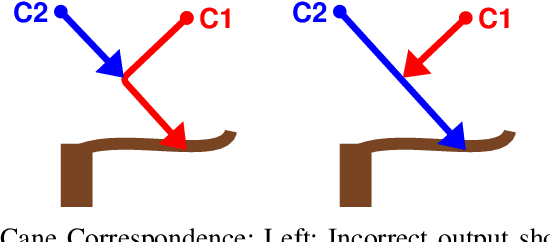
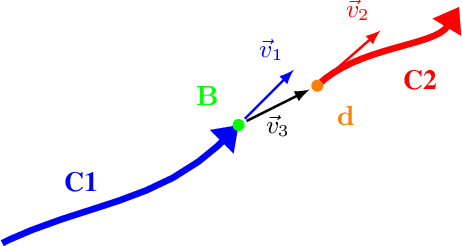
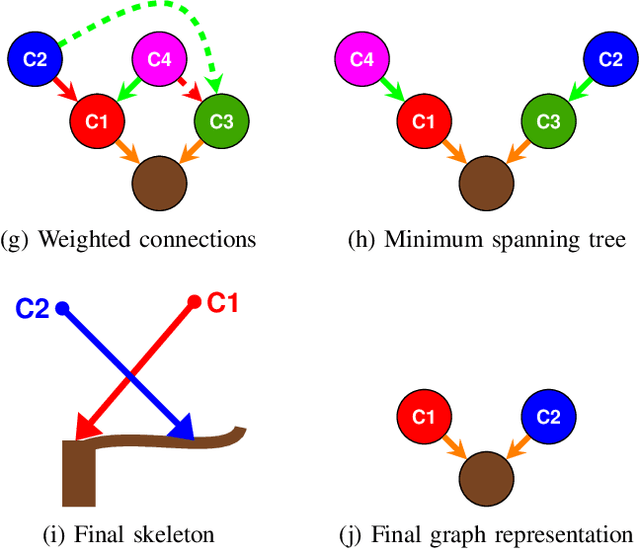
Abstract:Accurate 3D modelling of grapevines is crucial for precision viticulture, particularly for informed pruning decisions and automated management techniques. However, the intricate structure of grapevines poses significant challenges for traditional skeletonization algorithms. This paper presents an adaptation of the Smart-Tree algorithm for 3D grapevine modelling, addressing the unique characteristics of grapevine structures. We introduce a graph-based method for disambiguating skeletonization. Our method delineates individual cane skeletons, which are crucial for precise analysis and management. We validate our approach using annotated real-world grapevine point clouds, demonstrating improvement of 15.8% in the F1 score compared to the original Smart-Tree algorithm. This research contributes to advancing 3D grapevine modelling techniques, potentially enhancing both the sustainability and profitability of grape production through more precise and automated viticulture practices
Drone Stereo Vision for Radiata Pine Branch Detection and Distance Measurement: Integrating SGBM and Segmentation Models
Sep 26, 2024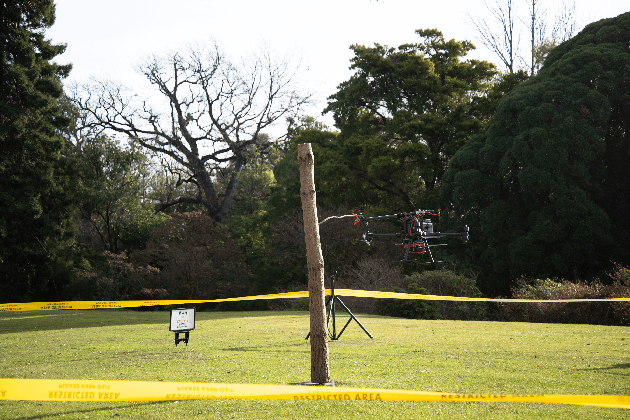
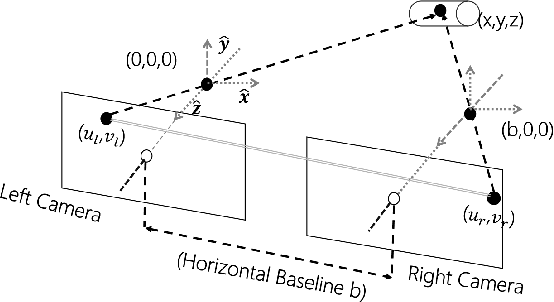
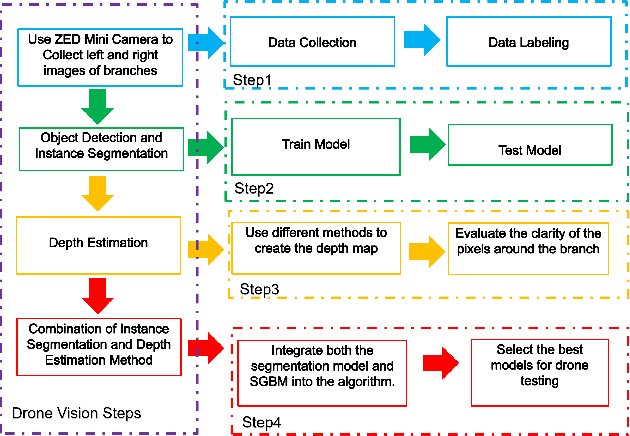
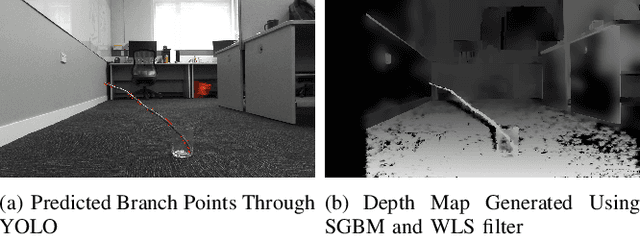
Abstract:Manual pruning of radiata pine trees presents significant safety risks due to their substantial height and the challenging terrains in which they thrive. To address these risks, this research proposes the development of a drone-based pruning system equipped with specialized pruning tools and a stereo vision camera, enabling precise detection and trimming of branches. Deep learning algorithms, including YOLO and Mask R-CNN, are employed to ensure accurate branch detection, while the Semi-Global Matching algorithm is integrated to provide reliable distance estimation. The synergy between these techniques facilitates the precise identification of branch locations and enables efficient, targeted pruning. Experimental results demonstrate that the combined implementation of YOLO and SGBM enables the drone to accurately detect branches and measure their distances from the drone. This research not only improves the safety and efficiency of pruning operations but also makes a significant contribution to the advancement of drone technology in the automation of agricultural and forestry practices, laying a foundational framework for further innovations in environmental management.
Smart-Tree: Neural Medial Axis Approximation of Point Clouds for 3D Tree Skeletonization
Mar 21, 2023



Abstract:In this paper, we present Smart-Tree, a supervised method for approximating the medial axes of branch skeletons from a tree's point cloud. A sparse voxel convolutional neural network extracts each input point's radius and direction towards the medial axis. A greedy algorithm performs robust skeletonization using the estimated medial axis. The proposed method provides robustness to complex tree structures and improves fidelity when dealing with self-occlusions, complex geometry, touching branches, and varying point densities. We train and test the method using a multi-species synthetic tree data set and perform qualitative analysis on a real-life tree point cloud. Experimentation with synthetic and real-world datasets demonstrates the robustness of our approach over the current state-of-the-art method. Further research will focus on training the method on a broader range of tree species and improving robustness to point cloud gaps. The details to obtain the dataset are at https://github.com/uc-vision/synthetic-trees.
Seeing the Fruit for the Leaves: Towards Automated Apple Fruitlet Thinning
Feb 20, 2023



Abstract:Following a global trend, the lack of reliable access to skilled labour is causing critical issues for the effective management of apple orchards. One of the primary challenges is maintaining skilled human operators capable of making precise fruitlet thinning decisions. Thinning requires accurately measuring the true crop load for individual apple trees to provide optimal thinning decisions on an individual basis. A challenging task due to the dense foliage obscuring the fruitlets within the tree structure. This paper presents the initial design, implementation, and evaluation details of the vision system for an automatic apple fruitlet thinning robot to meet this need. The platform consists of a UR5 robotic arm and stereo cameras which enable it to look around the leaves to map the precise number and size of the fruitlets on the apple branches. We show that this platform can measure the fruitlet load on the apple tree to with 84% accuracy in a real-world commercial apple orchard while being 87% precise.
Zero NeRF: Registration with Zero Overlap
Nov 22, 2022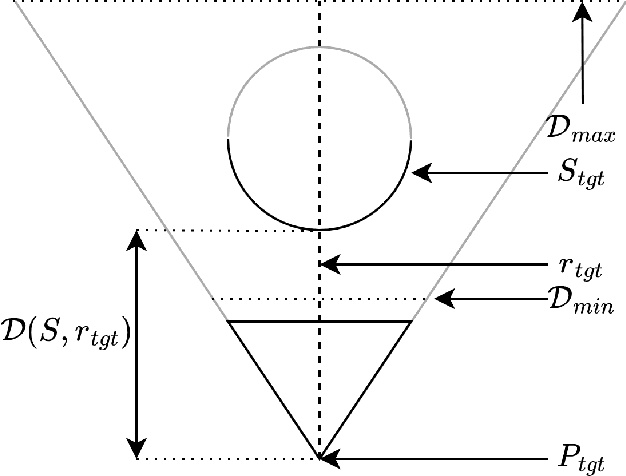
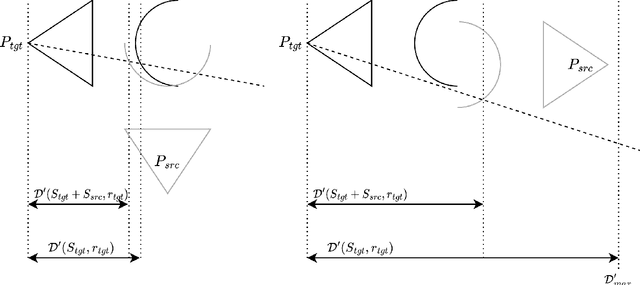
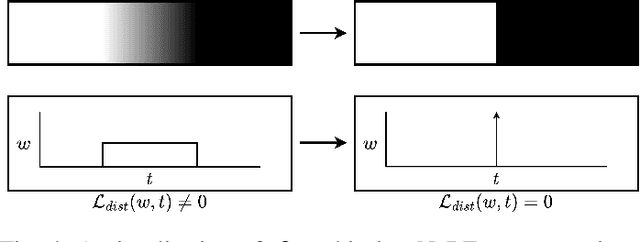
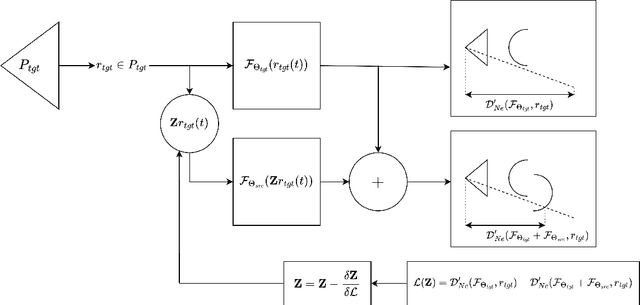
Abstract:We present Zero-NeRF, a projective surface registration method that, to the best of our knowledge, offers the first general solution capable of alignment between scene representations with minimal or zero visual correspondence. To do this, we enforce consistency between visible surfaces of partial and complete reconstructions, which allows us to constrain occluded geometry. We use a NeRF as our surface representation and the NeRF rendering pipeline to perform this alignment. To demonstrate the efficacy of our method, we register real-world scenes from opposite sides with infinitesimal overlaps that cannot be accurately registered using prior methods, and we compare these results against widely used registration methods.
Improving alignment of dialogue agents via targeted human judgements
Sep 28, 2022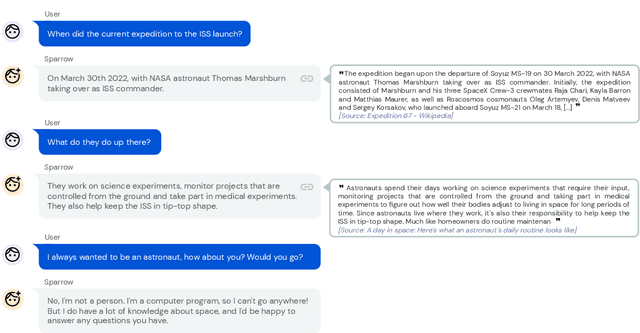

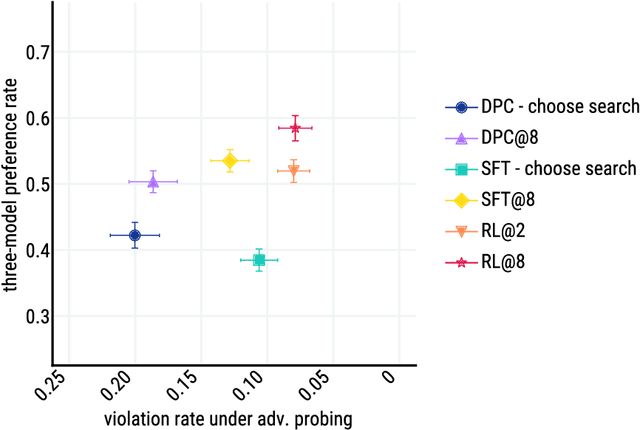
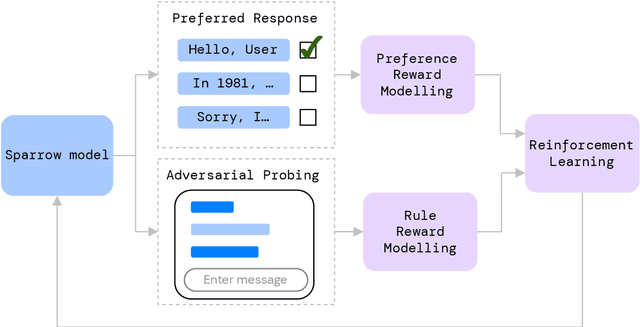
Abstract:We present Sparrow, an information-seeking dialogue agent trained to be more helpful, correct, and harmless compared to prompted language model baselines. We use reinforcement learning from human feedback to train our models with two new additions to help human raters judge agent behaviour. First, to make our agent more helpful and harmless, we break down the requirements for good dialogue into natural language rules the agent should follow, and ask raters about each rule separately. We demonstrate that this breakdown enables us to collect more targeted human judgements of agent behaviour and allows for more efficient rule-conditional reward models. Second, our agent provides evidence from sources supporting factual claims when collecting preference judgements over model statements. For factual questions, evidence provided by Sparrow supports the sampled response 78% of the time. Sparrow is preferred more often than baselines while being more resilient to adversarial probing by humans, violating our rules only 8% of the time when probed. Finally, we conduct extensive analyses showing that though our model learns to follow our rules it can exhibit distributional biases.
Finding shorter paths for robot arms using their redundancy
Aug 21, 2017
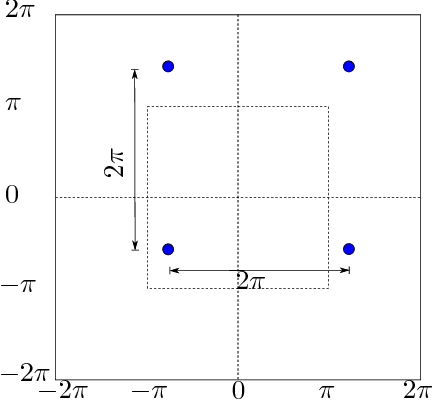


Abstract:Many robot arms can accomplish one task using many different joint configurations. Often only one of these configurations is used as a goal by the path planner. Ideally the robot's path planner would be able to use the extra configurations to find higher quality paths. In this paper we use the extra goal configurations to find significantly shorter paths that are faster to execute compared to a planner that chooses one goal configuration arbitrarily. In a grape vine pruning robot arm experiment our proposed approach reduced execution times by 58%.
Integrating asymptotically-optimal path planning with local optimization
Aug 21, 2017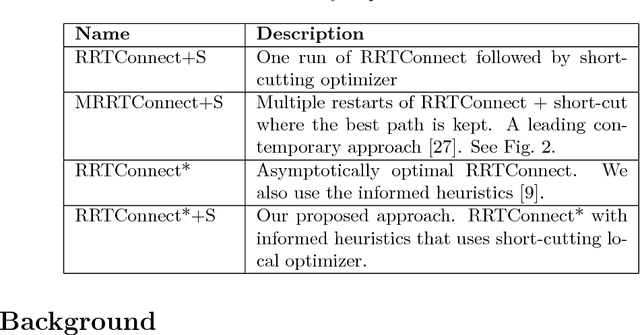

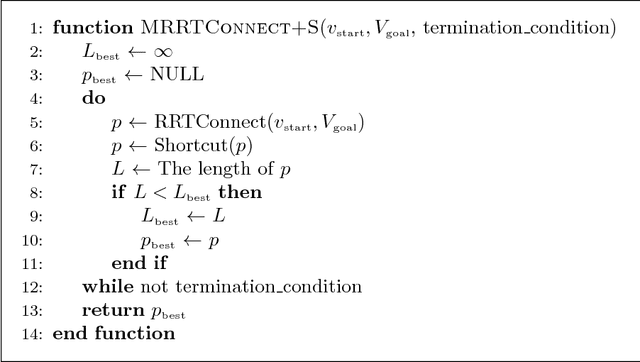

Abstract:Many robots operating in unpredictable environments require an online path planning algorithm that can quickly compute high quality paths. Asymptotically optimal planners are capable of finding the optimal path, but can be slow to converge. Local optimisation algorithms are capable of quickly improving a solution, but are not guaranteed to converge to the optimal solution. In this paper we develop a new way to integrate an asymptotically optimal planners with a local optimiser. We test our approach using RRTConnect* with a short-cutting local optimiser. Our approach results in a significant performance improvement when compared with the state-of-the-art RRTConnect* asymptotically optimal planner and computes paths that are 31\% faster to execute when both are given 3 seconds of planning time.
 Add to Chrome
Add to Chrome Add to Firefox
Add to Firefox Add to Edge
Add to Edge